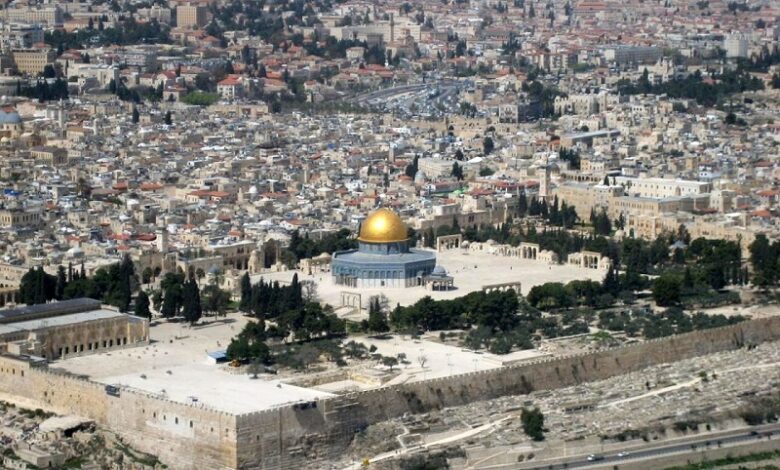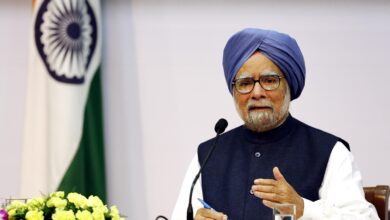If Europe Could Do It, So Can the Middle East

By Anne-Marie Slaughter
Special to The Times Kuwait
In 1951, just six years after World War II, Belgium, France, Italy, Luxembourg, the Netherlands, and West Germany signed the Treaty of Paris, establishing the European Coal and Steel Community.
It was a remarkable achievement, considering that France and Germany had fought three major wars between 1870 and 1945, leading to millions of deaths, the ravaging of lands and cities, and territorial conquest on both sides. Even decades later, my Belgian mother, who fled the German occupation of Brussels as a child with her mother and brother, trembled at the sight of a German customs uniform. Yet these former enemies agreed to pool their coal and steel production in ways that would prevent them from forging weapons to be used against one another ever again.
At a stroke, a handful of visionary statesmen — Robert Schuman and Jean Monnet of France, Konrad Adenauer of West Germany, and Alcide de Gasperi of Italy — laid the foundation for a new European future. The ‘Old Continent’ of religious and nationalist wars, great-power intrigue, secret diplomacy, and the endless redrawing of national boundaries (with little regard for the people within them) became a new kind of political entity. After being conceived as a community, it eventually grew into a ‘union’ of nation-states that retained enough of their sovereignty to act both independently and together.
It is a familiar story, but one that bears repeating in these dark days of war between historic and seemingly permanent adversaries. In the Middle East, the war between Israel and Hamas has put the concept of a two-state solution — a Palestinian state alongside an Israeli one — back on the table. US President Joe Biden has told Israeli Prime Minister Binyamin Netanyahu that it is “the only way forward” over the longer term, once Hamas’s ability to attack Israel or Israelis is destroyed. For the Palestinian people to recognize Israel’s right to exist and contribute to a lasting peace, Biden reasons, they must be able to envision a future of independence, security, and prosperity for themselves.
Yet in the two decades since the failure of the Oslo Accords — which mapped out a path to peace in the early 1990s — demographic and geographic realities have complicated matters. Owing to the growing Israeli-Arab population within Israel and the expansion of Jewish settlements in the West Bank under an Israeli government opposed to Palestinian statehood, the prospect of population exchanges and land swaps has become more difficult and politically fraught.
Under these changing conditions, supporters of a two-state solution have had to get more creative. One alternative, proposed by Israeli President Reuven Rivlin in 2015, is to establish a kind of confederation, which would bring the proposed two states closer together through freedom of movement across state borders and joint decision-making on issues affecting the entire territory. Similarly, Israeli human-rights lawyer May Pundak envisions a ‘two-state solution 2.0’, wherein a two-state confederation would share a homeland, following the model of the European Union.
Yet after the horrors of Hamas’s October 7 attack and the ongoing Israeli response (which has already killed thousands of civilians), how could the two sides ever choose to move closer together rather than further apart? Here, the European experience offers three important lessons.
First, the shooting must end, and the cost of the conflict must be high enough to create support for bold, enduring changes on both sides. In the current conflict, providing lasting security for all Palestinians and Israelis likely will require engagement by the US and multiple Arab governments and their militaries, both on site and at one remove. Only after security is achieved — probably following new Israeli and Palestinian elections — can the cataclysm of this latest round of violence become an impetus for envisioning a new future.
Second, it helps to start small. Do not begin with an outline of two separate states and a long list of issues to resolve between them. Instead, find the equivalent of the European Coal and Steel Community. Given its scarcity, the most important shared interest for Israelis and Palestinians is probably water. Joint management of water conservation, desalination, and usage would make it much harder for this critical resource to be weaponized. Another possibility is the joint production of green energy, including fuel, which would have commercial and ecological benefits and would reduce Palestinian dependence on Israeli supplies.
Third, engagement with well-meaning and likeminded third parties is key. For economic cooperation to work, the market must be large enough for a free-trade zone or a customs union to make sense. The seed for the European Economic Community was Benelux, a customs union between Belgium, the Netherlands, and Luxembourg. Agreed in 1944 and established in 1947, it became a full ‘Economic Union’ in 1958, providing a prototype for the European Economic Community. A natural starting point for Israelis and Palestinians would be some kind of free-trade area that includes Jordan and Egypt, with Saudi Arabia and one or more of the Gulf States added soon thereafter.
New thinking requires new thinkers. The Israeli and Palestinian groups that will be most receptive to real change are likely to be drawn from women, young people, and Israeli Arabs, many of whom have been caring for the survivors of the October 7 attack and engaging in other civic activity within Israel. Climate activists, ecologists, public-health authorities, and professionals in other fields that transcend national boundaries are also natural allies. Supporters of a lasting peace should be organizing and funding new social movements and political coalitions.
Is this vision pie in the sky? Perhaps. But without a compelling and plausible strategy for the day after, the day after may never come. Europe transcended two millennia of wars triggered by deep ethnic, religious, political, and cultural divisions to create a new political entity. So, too, can the Middle East.

Anne-Marie Slaughter
A former director of policy planning in the US State Department, she is CEO of the think tank New America, a fellow at the American Academy in Berlin, Professor Emerita of Politics and International Affairs at Princeton University, and the author of Renewal: From Crisis to Transformation in Our Lives, Work, and Politics.
Copyright: Project Syndicate
www.project-syndicate.org













